Competitor Audit
My competitor analysis of the camp supply industry included both direct and indirect competitors. The comparisons focused on consistency of design, accessibility, features, user flow, navigation, and clarity of information.

Nomad Camp is a retailer, with both an online store and physical locations across Australia, that caters to outdoor enthusiasts and weekend adventurers. The brand offers a wide range of products, including footwear, hiking and outdoor clothing, fishing equipment, and 4WD accessories. Because of the broad range of outdoor hobbies and products they sell, Nomad Camp appeals to a wide range of potential customers. The target demographic is individuals aged 17 to 75.
People interested in outdoor goods come from various age groups, and the older group of users have limited experience with online shopping due to not growing up with e-commerce websites in their earlier years. As a result, this makes it difficult for older users to understand the shopping journey, the navigation and purchasing products with confidence online. A large percentage of campers in Australia are over the age of 50 or older being 46%.
Source: https://camperchamp.com.au/camping-statistics/
The goal is to develop a camping application with a simple checkout process that enables users to easily browse and complete purchases, regardless of their age or online shopping experience, while minimising frustration.

This project was an individual student endeavour. Following the design stages of the UX product lifecycle has enhanced my planning and research skills.
My competitor analysis of the camp supply industry included both direct and indirect competitors. The comparisons focused on consistency of design, accessibility, features, user flow, navigation, and clarity of information.
Language - Outstanding
Features - Good
Brand Identity - Oustanding
Navigation - Good
User Flow - Good
Accessibility - Good
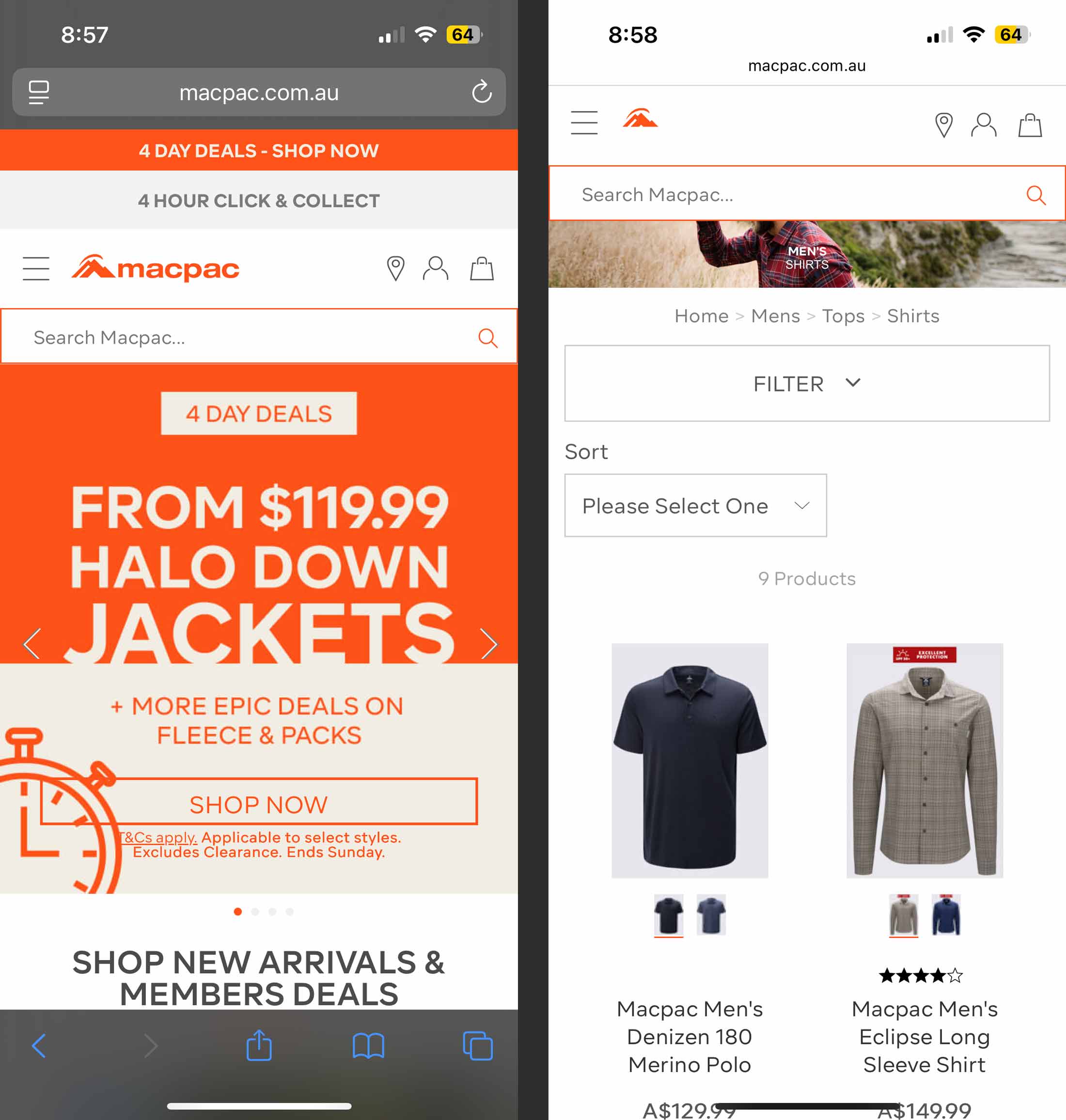

Language - Outstanding
Features - Good
Brand Identity - Needs Work
Navigation - Good
User Flow - Good
Accessibility - Needs Work
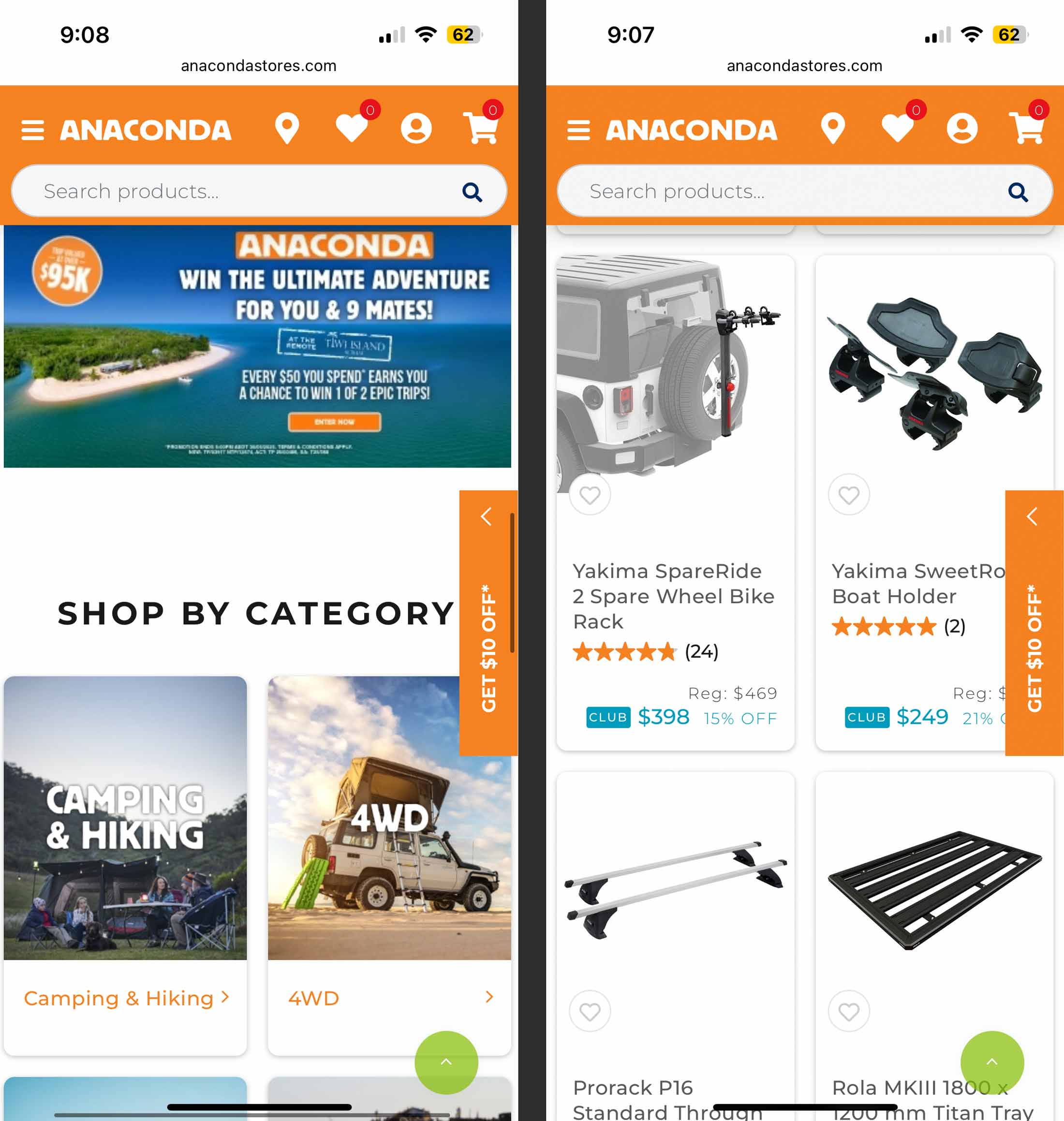

Language - Needs Work
Features - Good
Brand Identity - Needs Work
Navigation - Needs Work
User Flow - Good
Accessibility - Needs Work
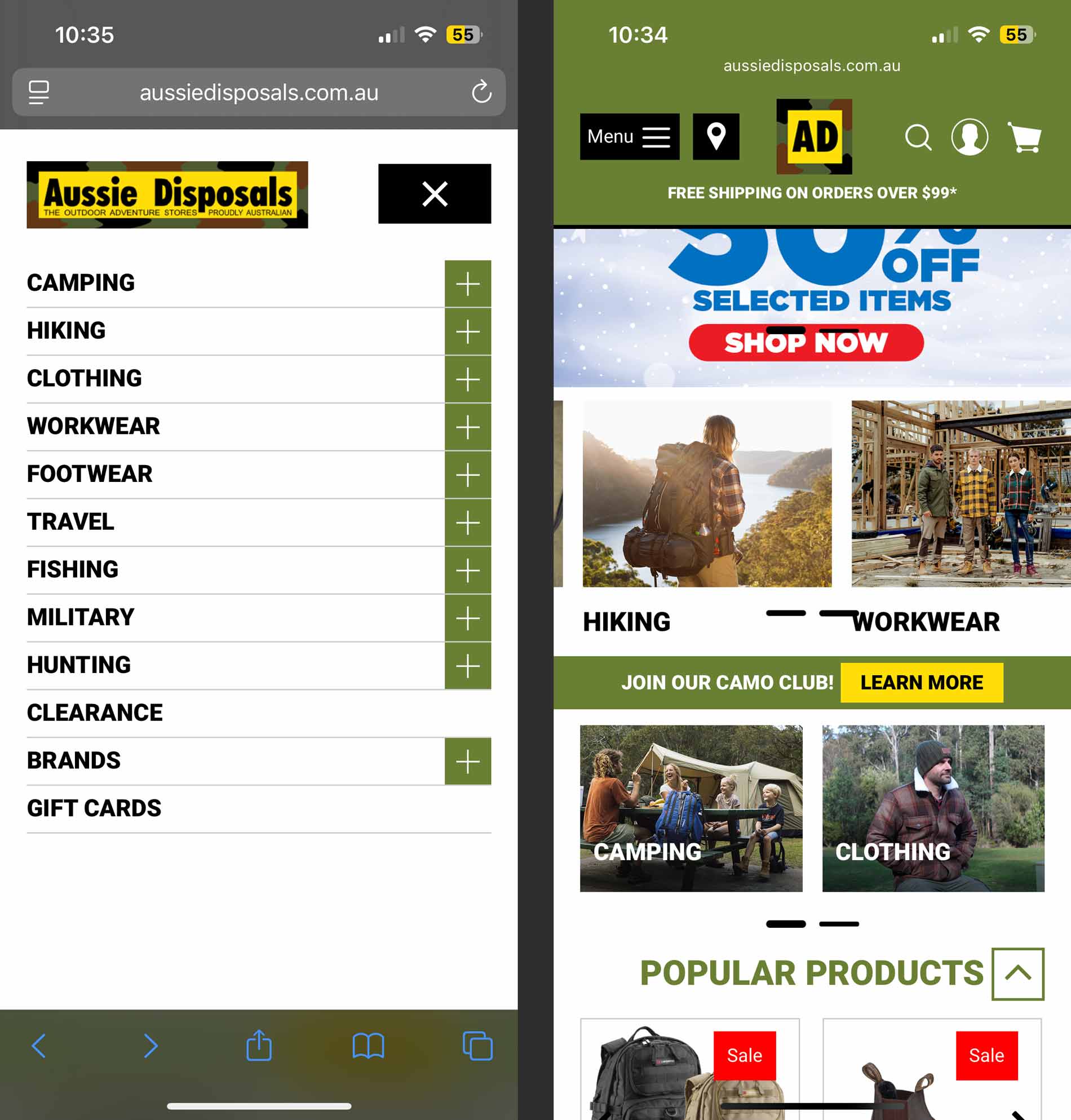
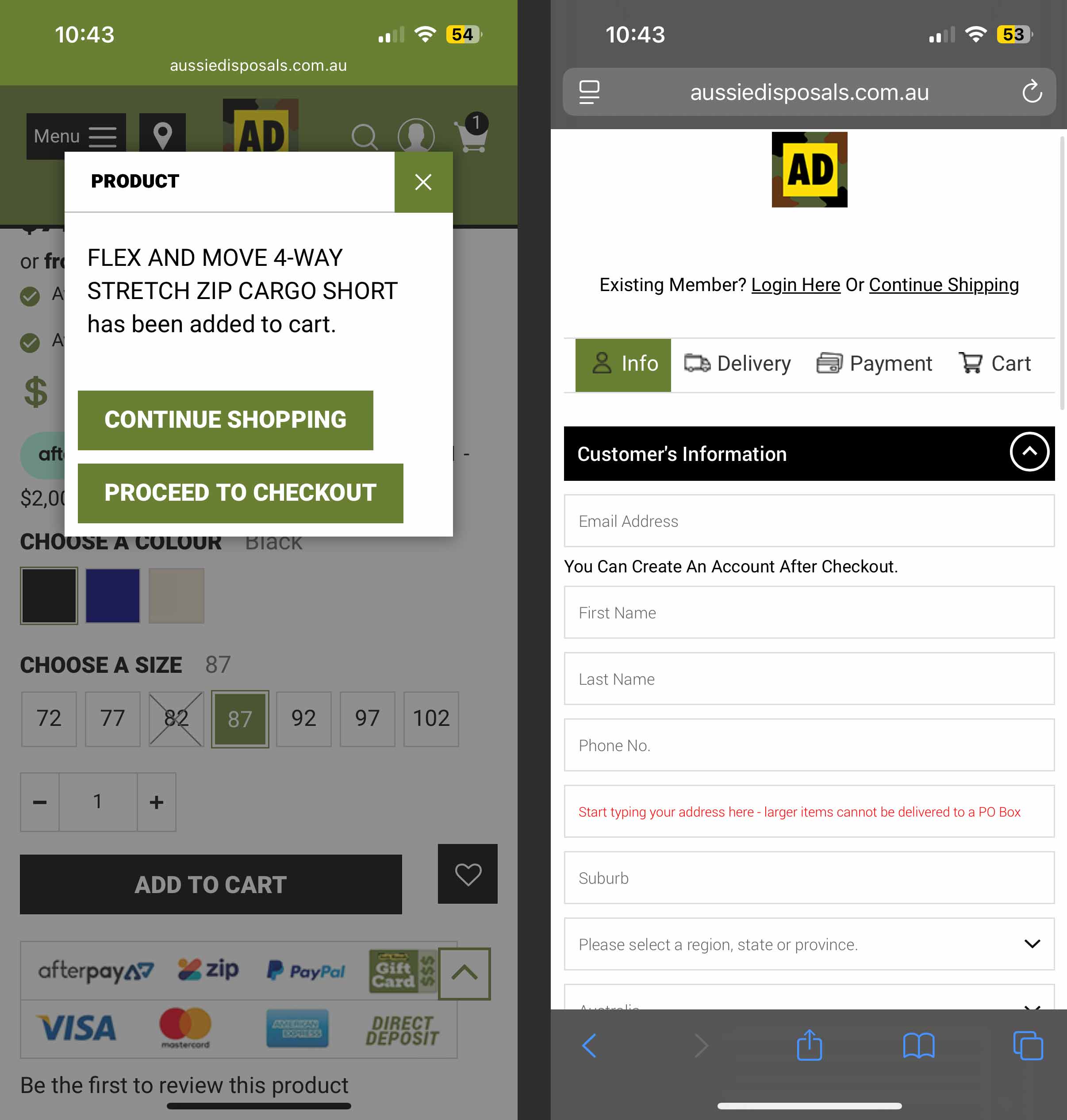
Language - Good
Features - Good
Brand Identity - Good
Navigation - Good
User Flow - Oustanding
Accessibility - Good
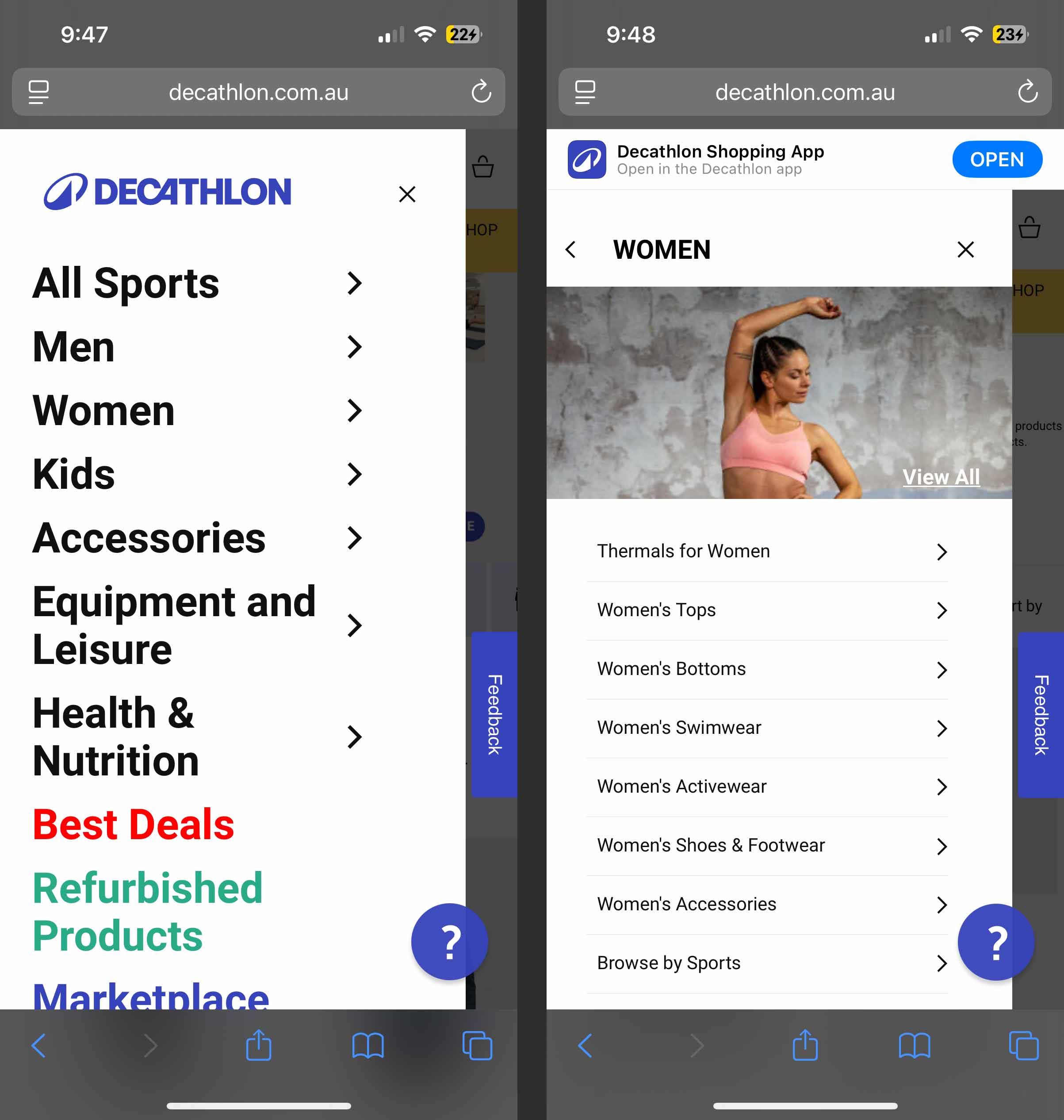
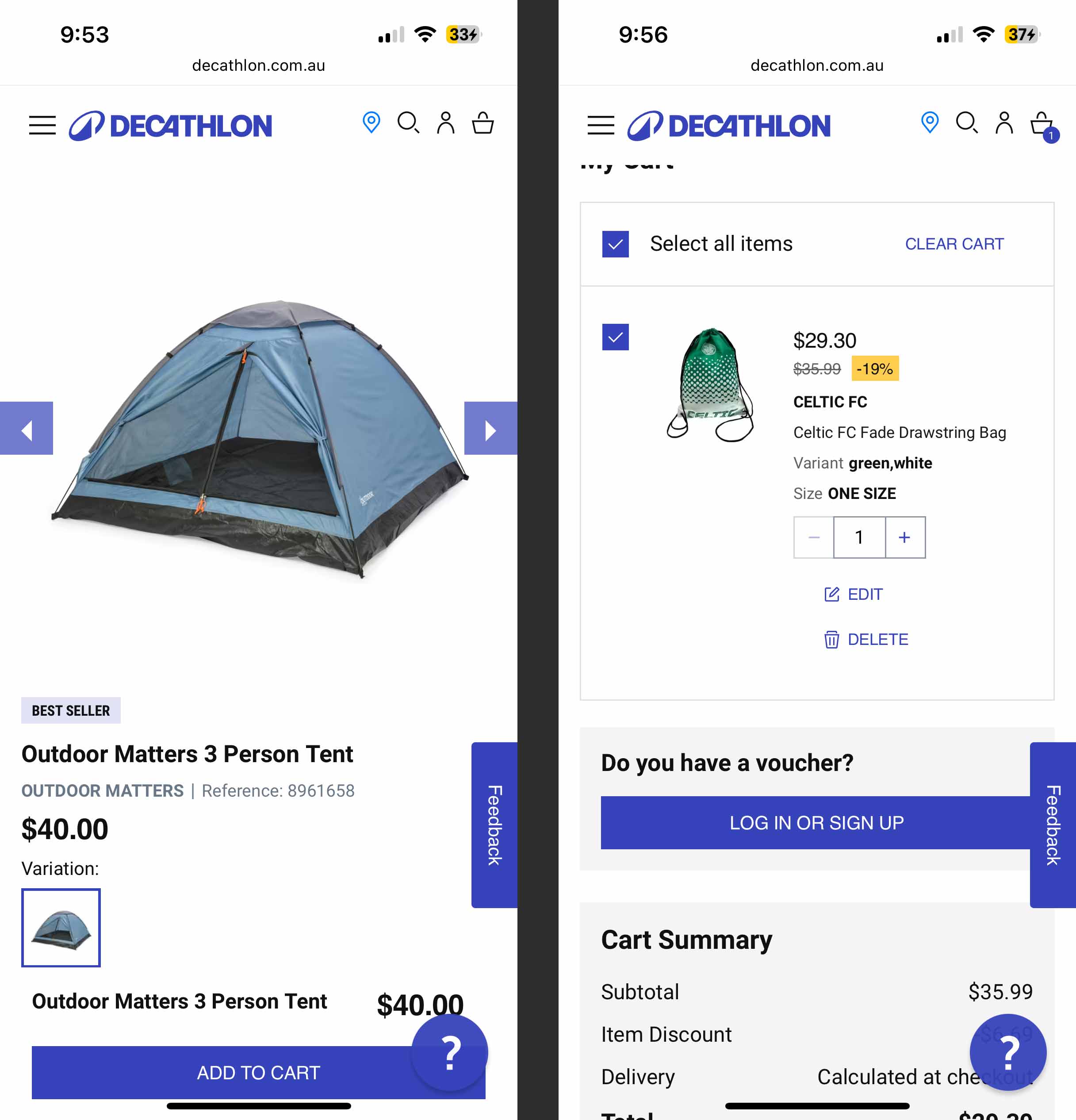
Aggregated empathy map from user group interviews. Collecting information from different potential users based on thoughts, feelings and behaviours.

Initial research on potential users and customers was conducted through in-person interviews and phone calls, based on availability and preference. Before these interviews, I believed that the layout of products in outdoor stores was easy to follow. However, both the competitor audit and user research revealed accessibility issues, including problems with screen reader compatibility, which changed my perspective.
Products taking longer than expected to be delivered.
Forms that aren’t clear to fill out.
Being overwhelmed by the amount of products displayed on screen.
Certain products not displaying enough information or easy to understand.










The address selection section was designed to use a numbered system, intending to guide users through the necessary steps in order. The idea was that users would first select their address (step one) and then choose their preferred delivery type (step two). However, a usability study revealed that this design was ineffective. Participants did not notice or follow the numbered order or the title indicating the sequence of actions.

Based on user behaviour observed in the initial usability test, I decided to reduce the number of actions required to be taken while selecting an address. I separated delivery address from delivery type to a separate screen.

During the first usability study, a participant highlighted the card payment form was missing billing address field. This feedback underscored the importance of including the billing address as a vital security feature to help prevent unauthorised purchases.







UI components were checked using WCAG that colours meet AA Compliance.
Easy to read typeface has been selected with a clean and simple design in different weights. The type hierarchy scale system allows the user to decipher different sections.
Labels under icons for screen readers and to allow users to easily understand navigation bar links.
In areal-world scenario, to gauge the effectiveness of these UX design developments, I would use to measure the impact on users from signups, customer feedback surveys and sales statistics completed through app.


Since this was my first major project in Figma, I learnt the power of components and keeping them organised. Areas of improvements that I would like to further study consist of, better name conventions of styles and improving UX research skills.

